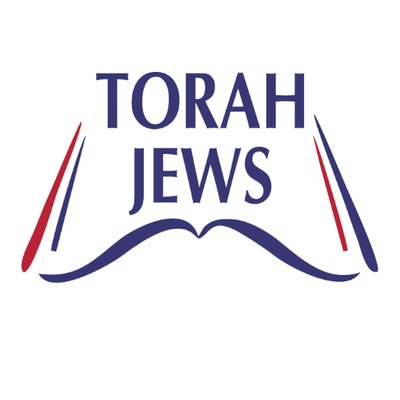
One who touches a dead human body will be unclean for seven days; he must purify himself with [the ashes of the red heifer] on the third day, and on the seventh day [at nightfall] he will become clean. (Bamidbar 19:11-12)
The Mishnah in Parah 3:5 teaches that the first red heifer was burnt under the direction of Moshe Rabbeinu in the desert, and its ashes were used to purify Jews for almost a thousand years, until the time of Ezra, when the Second Temple was built and a new red heifer was prepared. During the Second Temple era a total of eight red heifers were prepared. Another red heifer will not be prepared until the coming of moshiach (Rambam Parah Adumah 3:4). Although after the destruction of the Temple no red heifer was ever prepared, we know that in the times of the Tannaim and Amoraim they still had some of the ashes of the last red heifer, as the Tosefta (Parah 3) states: “The ashes descended with them to Babylonia…” Rabbi Yaakov Emden also says this in Sheilas Yaavetz 1:89, and he brings proof from Chagigah 25a: “The group purifies its wine and oil in Galilee.” The same proof is cited by the Mishneh Lamelech in the Laws of Mourners, Chapter 3. It is also known that the Arizal instructed his disciples never to use practical Kabbalah, since we have no ashes of the red heifer in our time to become clean. The Talmudic Sages, he says, had the right to use it because they still had some ashes of the red heifer in a secret place for exceptional individuals to use.
Based on this information, the Rabbi Chaim Elazar Shapiro of Munkacz explained the true meaning of a text often quoted by the Zionists. The Gemara says in Gittin 8b that if a Jew buys a field from a non-Jew in the Holy Land, he may ask the non-Jew to write the document on Shabbos if necessary, because when it comes to settling the Land the Sages waived the prohibition of asking a non-Jew to do work on Shabbos. This statement is also found in Bava Kama 80b, and is codified by the Rambam in his Laws of Shabbos 6:11 and by the Shulchan Aruch in Orach Chaim 306:11. We see from here, say the Zionists, that it is a positive commandment to settle the Holy Land with Jews, and that this commandment applies even in our times.
The Munkaczer Rebbe explains that there is a difference between the times of the Gemara, which was shortly after the destruction of the Temple, and today. The Gemara says in Megillah 10a that we may offer sacrifices although there is no Temple. The issue of offering the Pesach offering, should we receive permission to do so, has been discussed by Rabbi Akiva Eiger and the Chasam Sofer. Rabbi Chaim Nathanson, after a lengthy analysis in his work Avodah Tamah, concludes that we may not offer any sacrifices nowadays. Since we are all defiled from contact with dead bodies, and a defiled congregation cannot offer sacrifices without the atonement of the Kohein Gadol’s forehead plate, today as there is no forehead plate we cannot do it.
But in Talmudic times the Jews were not defiled, because they still possessed the ashes of the last red heifer. That is why the Sages were interested in keeping the Jewish settlement alive in Eretz Yisroel, so that they could purify themselves and offer sacrifices if permission were ever granted to do so. If no Jews lived there, who would offer the sacrifices if permission were granted? Jews would have to travel in from afar, a difficult journey in those days, over dangerous roads and stormy seas, and by the time they arrived perhaps the government would revoke its permission. So this buying of property on Shabbos was permitted not because of a positive commandment to settle in Eretz Yisroel, but because the Sages wanted there to be Jews living in Eretz Yisroel to offer sacrifices if it became possible. Since the Sages were the ones who made the prohibition on asking a non-Jew to do work on Shabbos, they had the power to suspend their own prohibition in this case so that the non-Jew could write up the bill of sale, in case he needed to leave right away and could not wait till after Shabbos.
Explaining it this way has an additional advantage: it solves an apparent contradiction in the Rambam. The Rambam, in his list of the 613 commandments, does not list any positive commandment to settle in Eretz Yisroel. This may be because he held that the Torah’s words “and you shall take possession of the land and live in it” (Bamidbar 33:53) are a promise and not a commandment (see Rashi on that verse). Alternatively, it was a temporary commandment that applied only during the Temple era (Megillas Esther; see Parsha Pearls Matos/Masei 5766). In any case, there is no such commandment nowadays according to the Rambam. How then can the Rambam codify the law that one may ask a non-Jew to write up a document in order to purchase land in Eretz Yisroel? But according to the above, the Sages’ reasons for encouraging Jews to purchase land in Eretz Yisroel have nothing to do with a commandment to settle there.
This halacha – asking the non-Jew to write a document – will not apply nowadays, since we are in any case unclean and cannot bring the Pesach offering. Still, the Rambam codifies it, following his practice of bringing all the laws in the Talmud, past, present or future. The Shulchan Aruch, too, brings it since it does apply after the destruction of the Temple and could conceivably apply today if we had the ashes of the red heifer. (Minchas Elazar 5:16)
And I will take you from the nations, and gather you from the lands, and I will bring you to your land. (Yechezkel 36:24)
“Hashem builds Jerusalem; he will gather the dispersed of Israel. He heals the broken-hearted, and bandages up their sadness.” (Tehillin 147:2-3) The Zohar derives from this verse the order of events in the time of Moshiach. First, Hashem will build Jerusalem. Then He will gather in the exiles. Lastly, He will revive the dead. (Midrash Haneelam v. 1 p. 139a)
But the Gemora in Megillah 17b seems to say otherwise. The Gemora says that the order of the blessings of Shmoneh Esrei corresponds to the order of events in the time of Moshiach. After the exiles are gathered in, justice will be meted out against the wicked, then the heretics will perish, and then the pride of the righteous will be raised up. Where will their pride be raised up? In Jerusalem. So it seems that the ingathering of the exiles will preceed the building of Jerusalem.
The Satmar Rav explained this according to the Raavad’s comment on Eduyos 2:9. The Raavad writes that in every exile, there are two times of redemption: a number of years, and a number of generations. When the number of years ends, Hashem takes the Jewish people out from their captivity and subservience to the nations, but for the fulfillment of Hashem’s promises to them they must wait until the right generation has arrived. This is why even after the time came and they left Egypt, they had to wander in the desert for 40 years until the generation destined to enter the Land had arisen. Similarly in the Babylonian exile, they were released from exile after 70 years, but the building of Jerusalem was not completed until 30 years later, in the time of Nechemiah. In the future as well, we will be gathered from all the lands of our exile to an intermediate place called “the wilderness of the nations,” and when the right generation arrives we will go from there to Eretz Yisroel. This intermediate place is described by Yechezkel: “And I will take you out from the nations, and I will gather you from the lands where you were dispersed, with a strong hand and an outstreched arm and poured out wrath. And I will bring you to the wilderness of the nations, and I will contend with you there face to face. As I contended with your ancestors in the wilderness of the land of Egypt, so I will contend with you, said Hashem G-d. And I will make you pass under the rod, and I will bring you into My covenant. And I will filter out from you the rebellious and the sinners against Me; from the land of their sojourn I will remove them, but to the Land of Israel they will not come, and you shall know that I am Hashem.” (Yechezkel 20:34-38)
The blessing in Shmoneh Esrei about the ingathering of the exiles refers to this first stage, when the Jews will be gathered into the wilderness of the nations. This stage comes before the building of Jerusalem. Therefore, the blessing reads simply, “Who gathers in the dispersed of His people Israel,” without saying to where. Some versions of the Nusach Ari have the word “l’artzeinu” – to our land – in the middle of the blessing. The Arizal himself said that this blessing has 20 words, so those versions would seem to be incorrect. And even if they are correct, certainly our prayer is eventually to return to Eretz Yisroel, but the order of the blessings laid out in the Gemora in Megillah 17b relates to their main subjects, expressed in the endings of the blessings, which are the most important part. Here the main subject of the blessing is not the return to Eretz Yisroel. (Vayoel Moshe 1:22)
tags:
